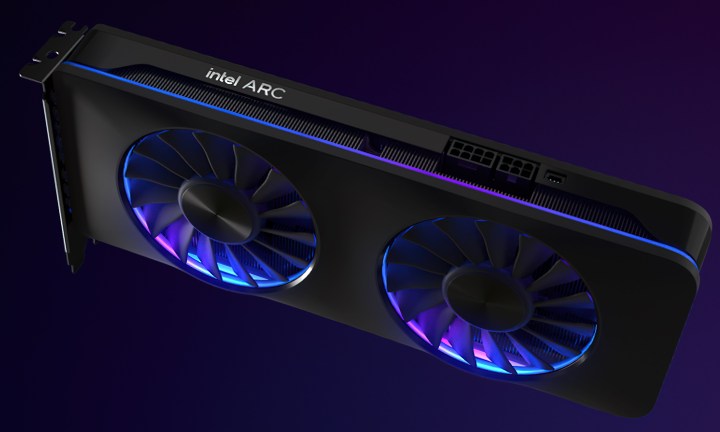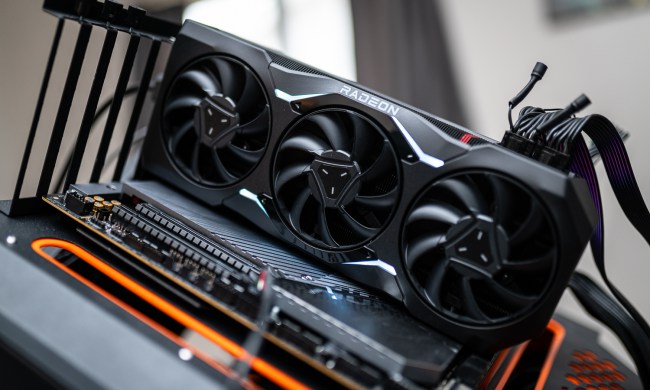
Intel’s most stealthy GPU appeared in yet another round of leaked benchmarks. The Intel Arc A580 was tested in OpenCL on Geekbench, and its score pits it against AMD’s RX 7600. But does that really mean that it’ll be on par with one of AMD’s best graphics cards in this generation?
Although most of us have heard of the Arc A770 and the Arc A750, and even the entry-level Arc A380, the Arc A580 remains a bit of a myth. Announced well over a year ago, the GPU has been spotted in benchmarks every so often, but Intel hasn’t released it to the market just yet. It’s hard to say what the reason is behind this delay, as the specs of the card have been known for a long time.
The Arc A580 comes with 24 Xe cores, 8GB of GDDR6 memory across a 256-bit bus, and the same bandwidth as the Arc A750 and the 8GB version of the Arc A770 — 512GB/s. The maximum clock speed is said to be 1.7GHz, but the card surpassed it by far in the benchmark, maxing out at 2.4GHz.
Paired with an Intel Core i7-12700 CPU and 32GB of DDR5-4800 RAM, the GPU managed to score 82,992 points in the OpenCL benchmark, which is actually a tiny bit more than the RX 7600 (82,981 points). However, that doesn’t necessarily make the Arc A580 the new budget gaming hero — assuming that it even hits the market.
What we’re seeing here is a single benchmark score, and in an OpenCL test, too. This means that it’s not indicative of the card’s gaming potential at all, as it tests the general compute performance first and foremost. It’s important not to get too excited here.
[GB5 GPU] Unknown GPU
CPU: Intel Core i7-12700 (12C 20T)
CPUID: 90672 (GenuineIntel)
GPU: Intel Arc A580
API: Open CL
Score: 82992
VRAM: 6.32 GBhttps://t.co/jSP7IYuXAe— Benchleaks (@BenchLeaks) August 3, 2023
With that disclaimer out of the way, it’s still a good score for the A580. While AMD’s recent RX 7600 is a little slower than its Nvidia counterpart (RTX 4060), it’s still a solid GPU due to its budget pricing.
Intel Arc Alchemist is now one generation behind the competition, but it could still prove to be successful if priced correctly. Winning on performance per dollar has always been Intel’s plan, so with that in mind, we might be looking at a $150 to $200 GPU that could make a decent alternative for budget-friendly PC builds.
Seeing as Intel has been hard at work releasing drivers and performance adjustments for its flagship GPUs, the Arc A580 might turn out better than expected. Still, it certainly wouldn’t hurt for Intel to remind the world that it even exists, what with the long delay between the announcement and the still unknown release date.




